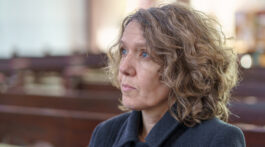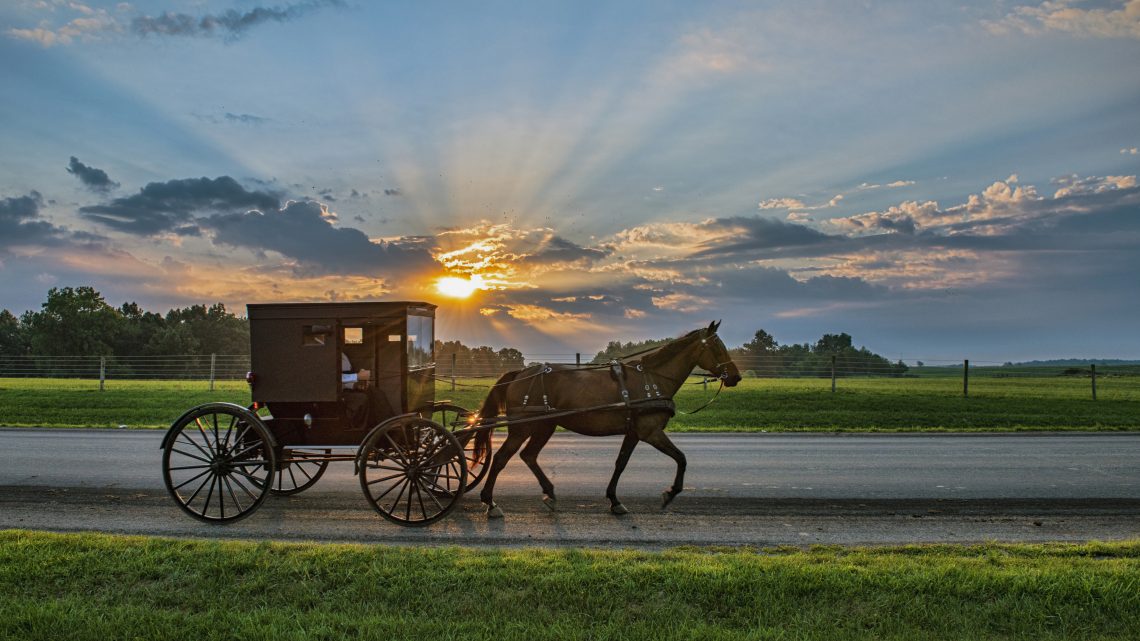Mary Gingerich was born and raised in an Amish community. She was committed to the church, married an Amish man and raised her children in the Amish faith.
One year, Mary and her husband (at that time) decided to join a mail book club. Each month the couple would receive a book in the mail. One of the books they received was “The Power of Positive Thinking” by Norman Vincent. They were impacted by the book and told others in the community about its contents.
While Mary believed they were doing nothing wrong, many in the community believed the book contained witchcraft. Pastors visited her house asking her to burn the book. She refused to do so, saying the book did not conflict with the Bible nor their Amish beliefs.
After refusing multiple times to burn the book, the community voted to excommunicate Mary and her family from the church. Feeling excluded from their community, they decided they wanted to move.
The family had a lot of farm machinery they did not want to take with them, so they began planning a sale. During this time, a man, who introduced himself as Mr. Jackson, knocked on the family’s door. He explained he was selling machinery. Mary’s family said they weren’t interested because they were planning their own sale. Mr. Jackson spoke with the family for a few minutes to better understand their situation. He also realized the family would have a need in a couple months.
The family had huge strawberry patches that would soon be ready for picking. In the past, the family relied on the Amish community to help pick all the strawberries. Now excommunicated from the church, the family was unsure how they would pick all the strawberries before they went bad.
When Mr. Jackson heard of the family’s dilemma, he assured them not to worry. Mr. Jackson was an Adventist with connections to nearby Sunnydale Adventist Academy. When harvest season came, Mr. Jackson returned with some students to help pick the strawberries. The family was surprised by the number of students who helped quickly pick the berries. It was a huge help to them.
Later that evening, Mr. Jackson returned with his own family and a Bible in hand. Together they studied the Bible until 1 a.m. Mr. Jackson continued to come by the family’s house in the days and weeks that followed, answering questions the family had about the Bible.
“The way we were brought up [in the Amish community], they don’t really want you to study the Bible,” Mary said. “You listen to what the preacher says, and that’s good enough.”
Mary and her then-husband began to learn more about the Bible and discovered some of the things they were taught growing up were untrue. They continued to study the Bible together and occasionally with Mr. Jackson. From those studies, they decided to be baptized into the Seventh-day Adventist Church.
No longer able to send their children to the nearby Amish school due to their excommunication, the family sent their children to Sunnydale Adventist Elementary school. However, due to financial struggles they pulled their children out of the school after a short time and sent them to public school.
The family sometimes struggled to purchase necessities, like new clothes. Mary said that church members would occasionally give the family hand-me-downs. Despite these financial struggles, Mary always paid tithe, something that she learned about after leaving her Amish faith.
“I always paid my tithe,” Mary said. “God always provided. He made things possible when I wasn’t sure how I would make it. That really taught me to trust in God.”
A few years later, one of Mary’s daughters, Sarah, wanted to attend Sunnydale Adventist Academy. However, Mary was unsure how to pay the bill. To help with the expense, Sarah got a job on campus. A generous donor covered the rest of Sarah’s bill, and she was able to attend the academy for all four years.
“I don’t know who the donors were, but I want to say thank you to them,” Sarah said. “I really found Christ during my years at Sunnydale.”
Mary and Sarah said that if it were not for the immediate actions of a few people from the church, they are not sure where they would be today. Mary said each of those kind actions made the biggest difference.
Today, Mary encourages others to reach out to the Amish community. She says that many communities are more open to speaking with outsiders than they were in the past. She said, however, that the best way to reach the community is quite simple.
“Just become a friend,” Mary said.










